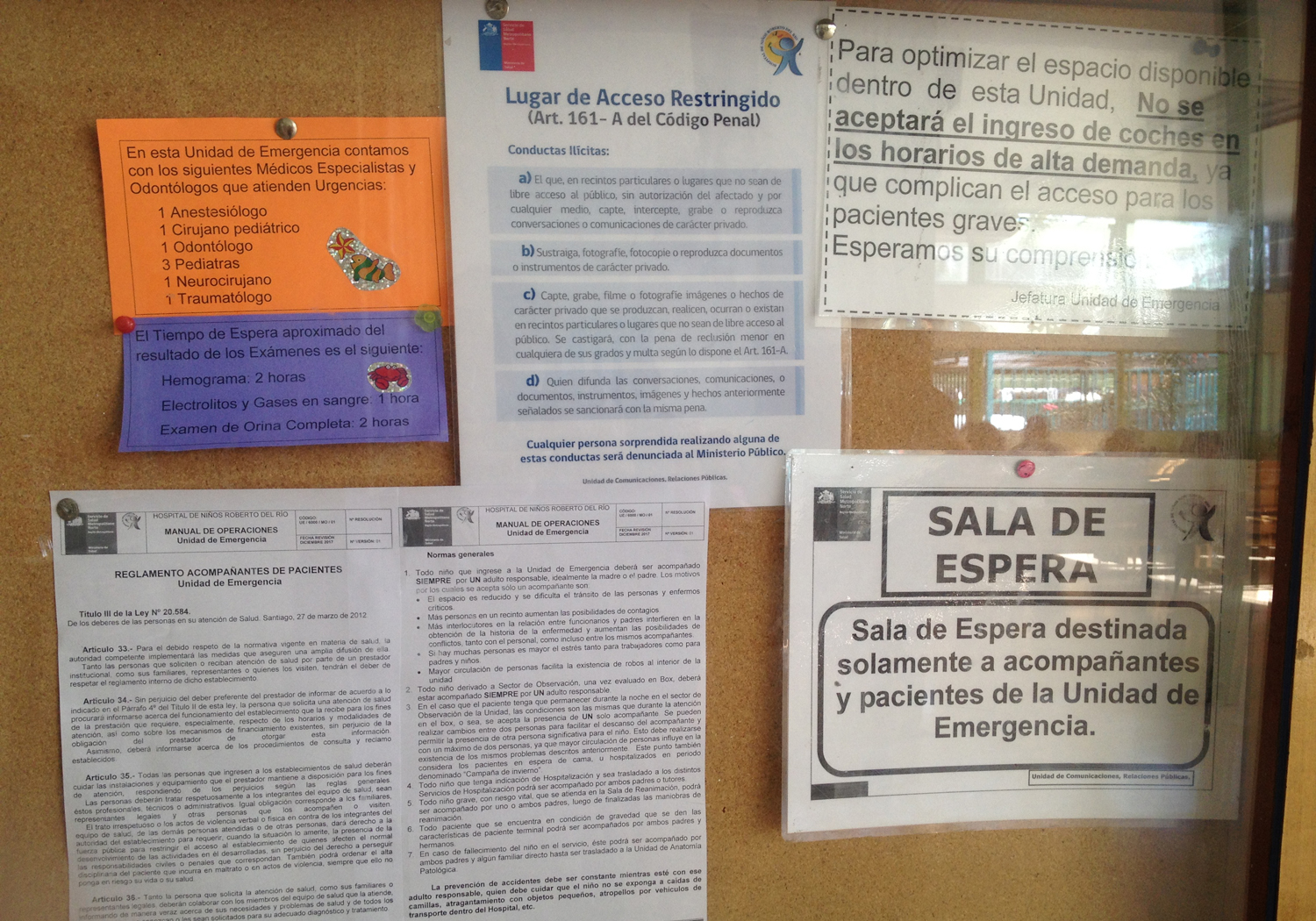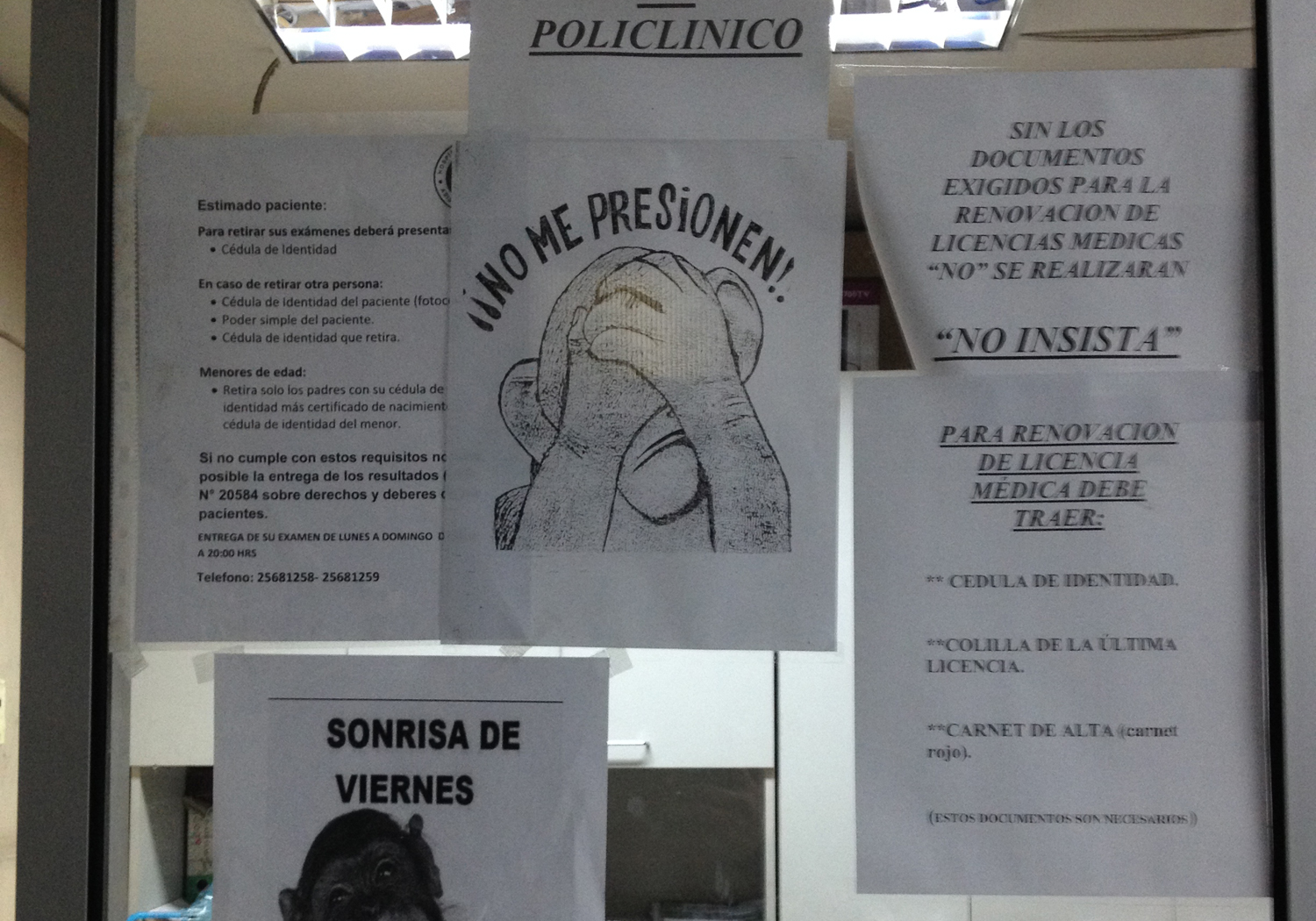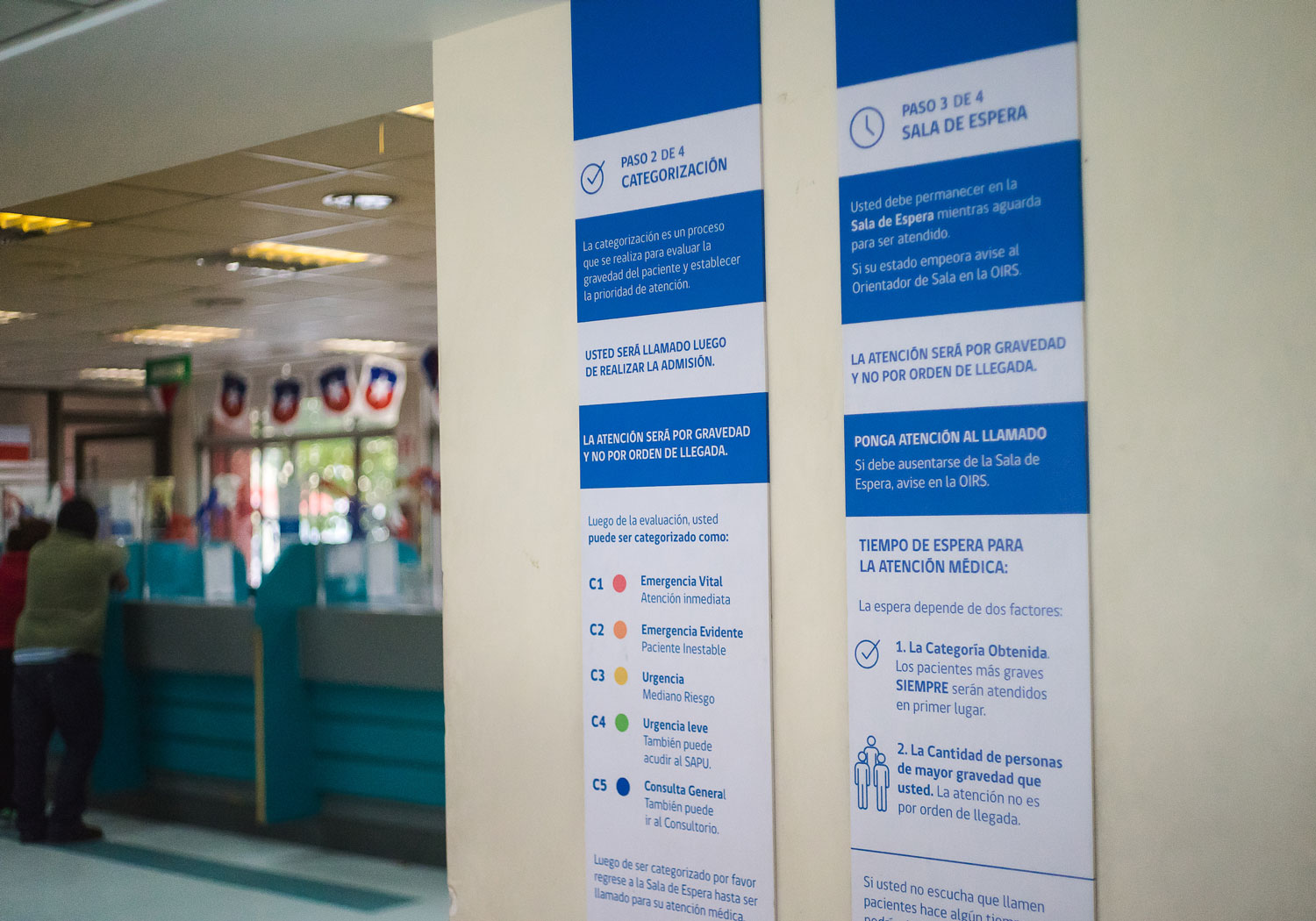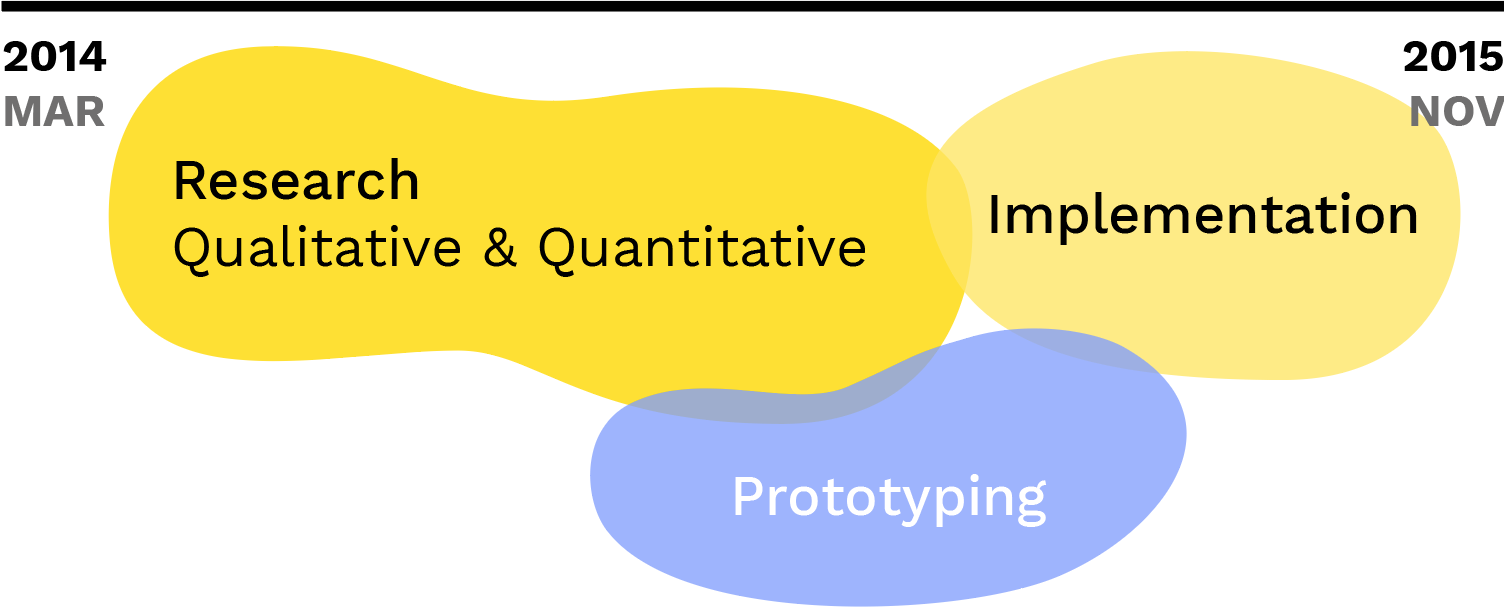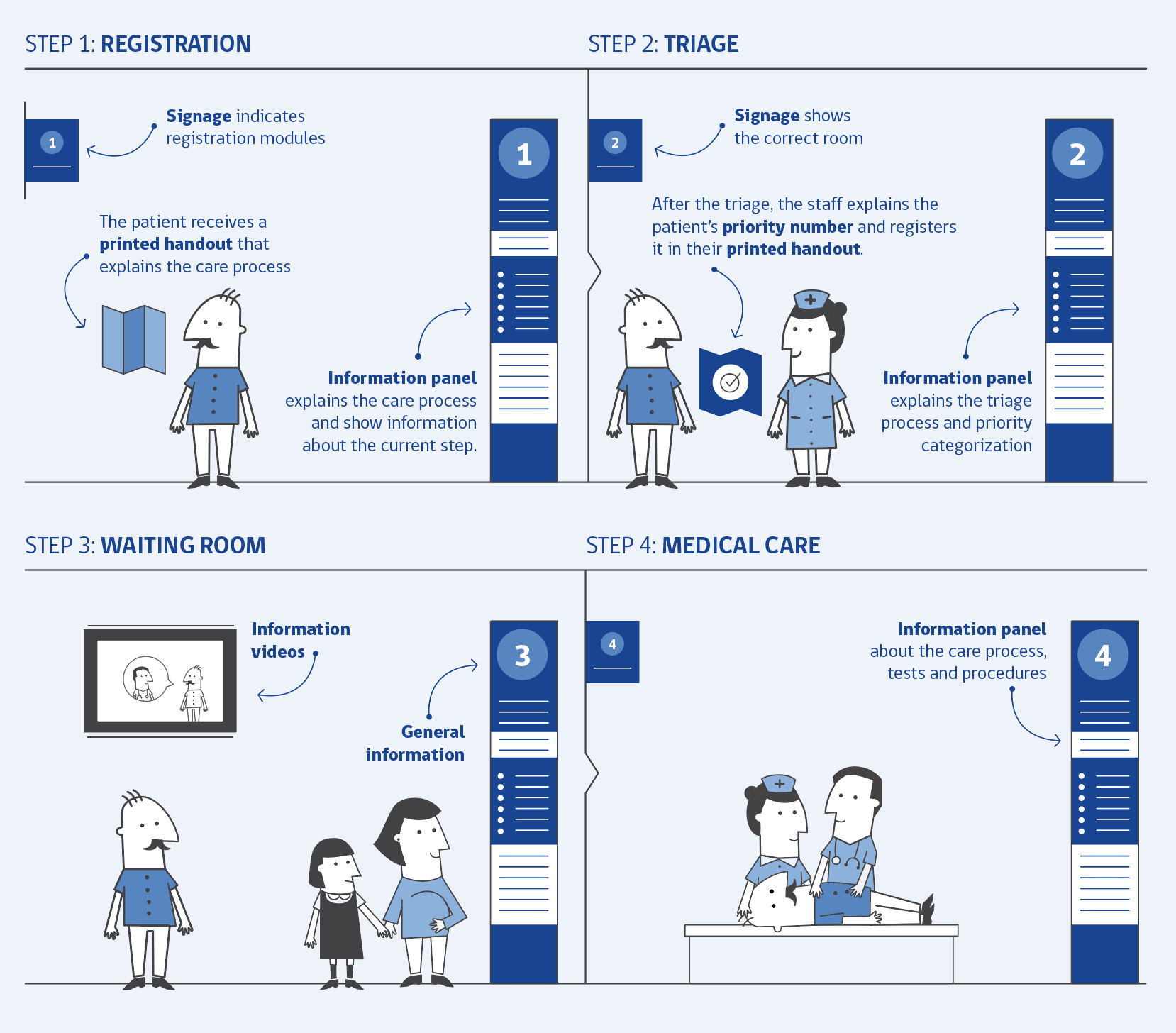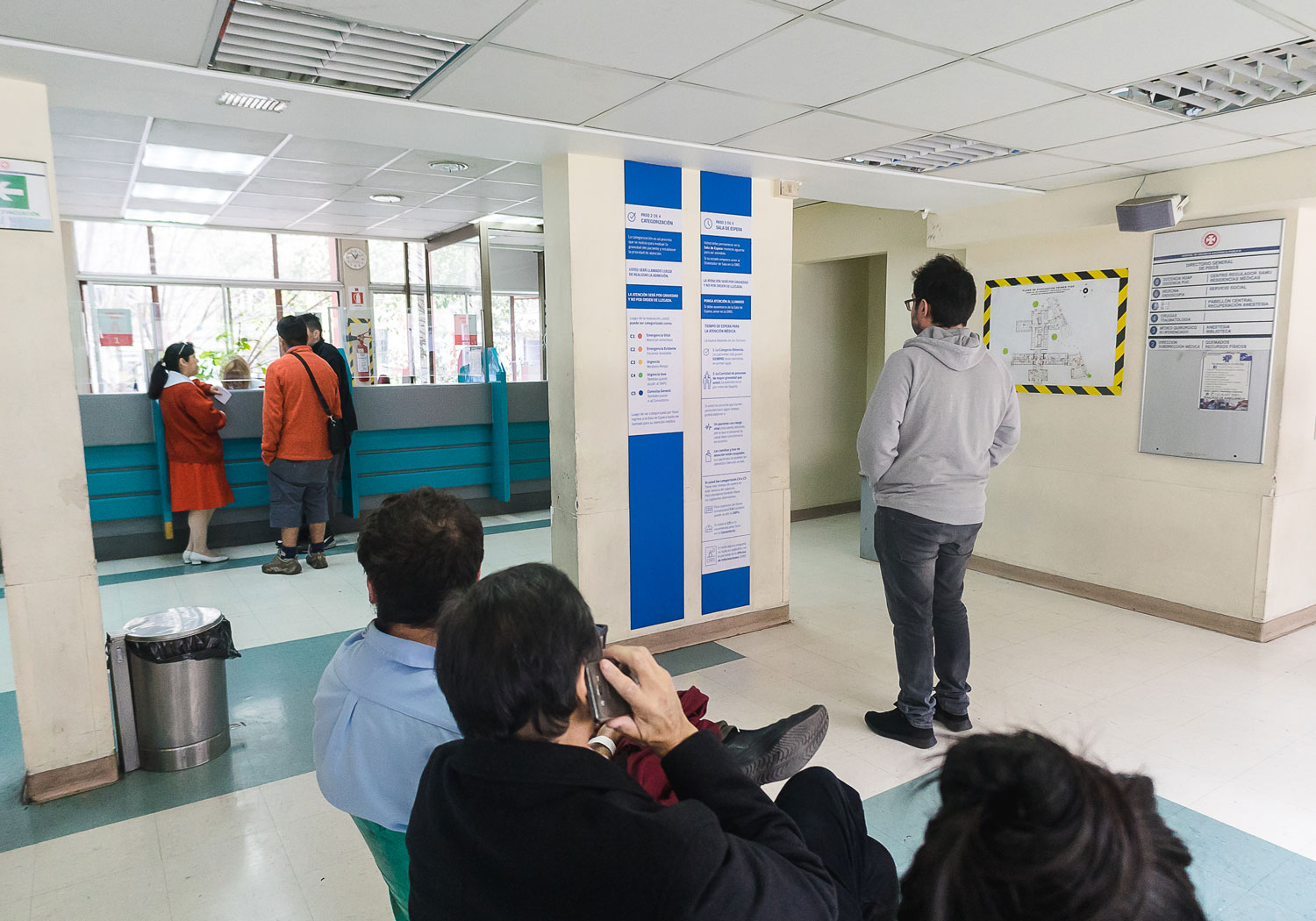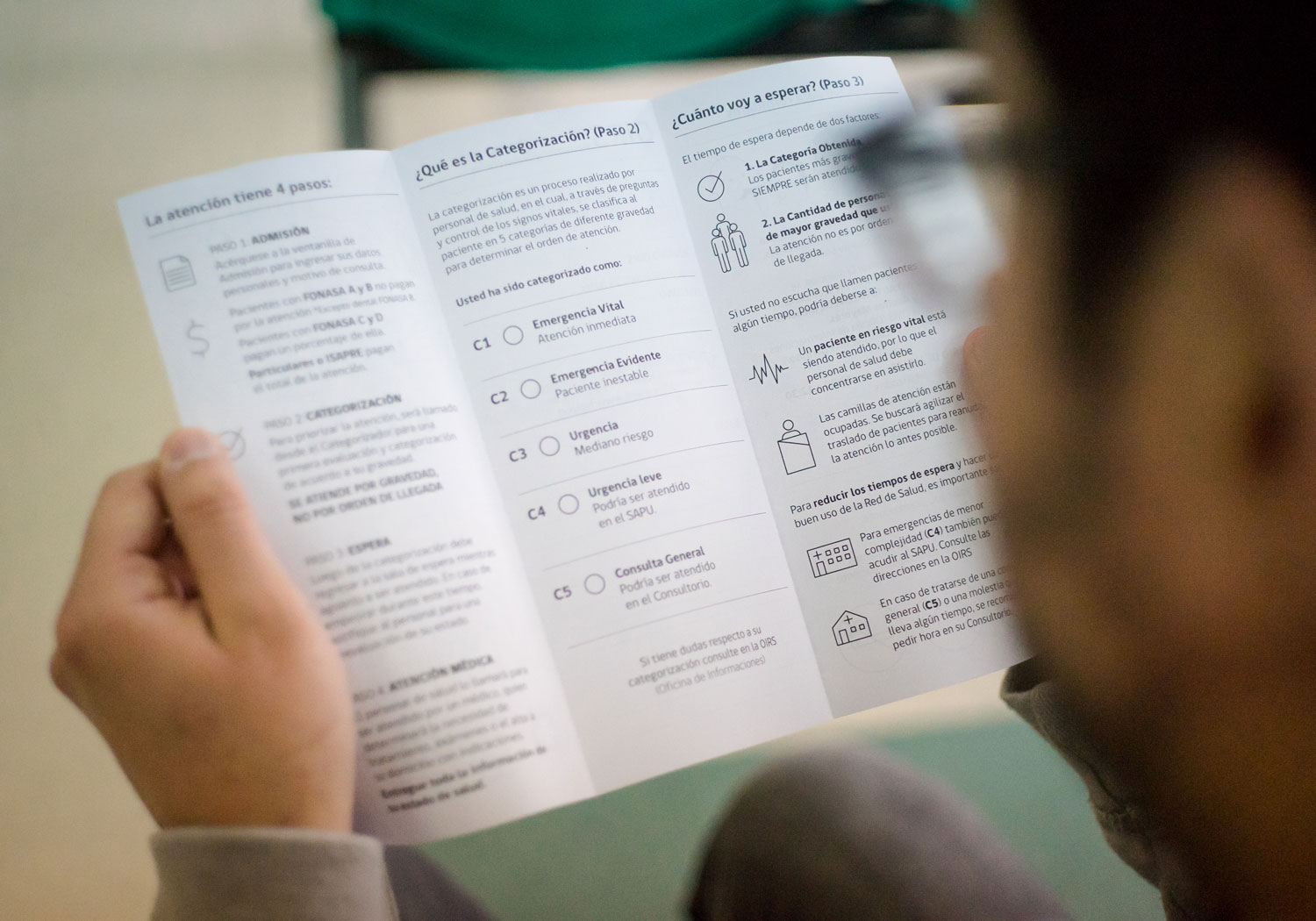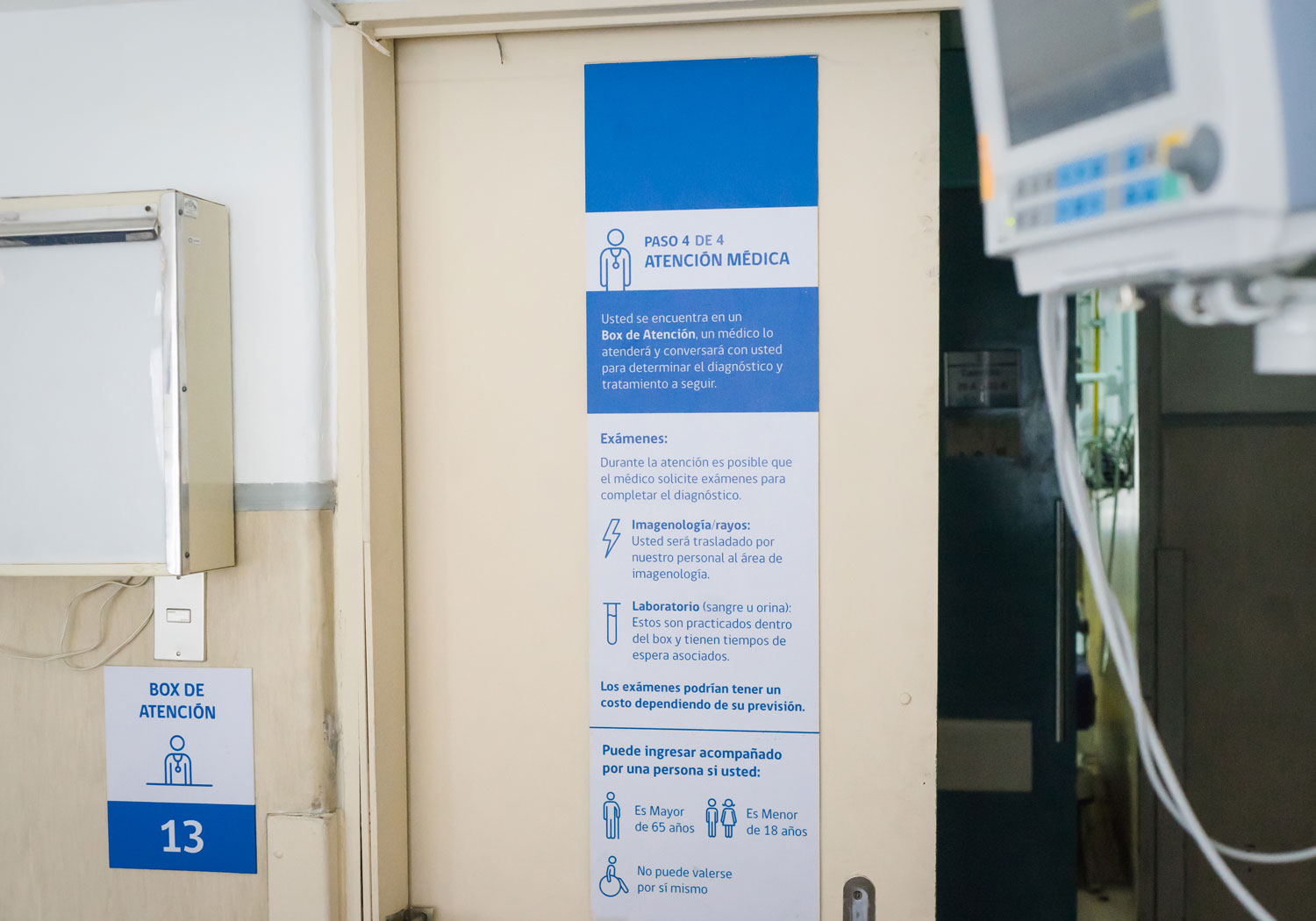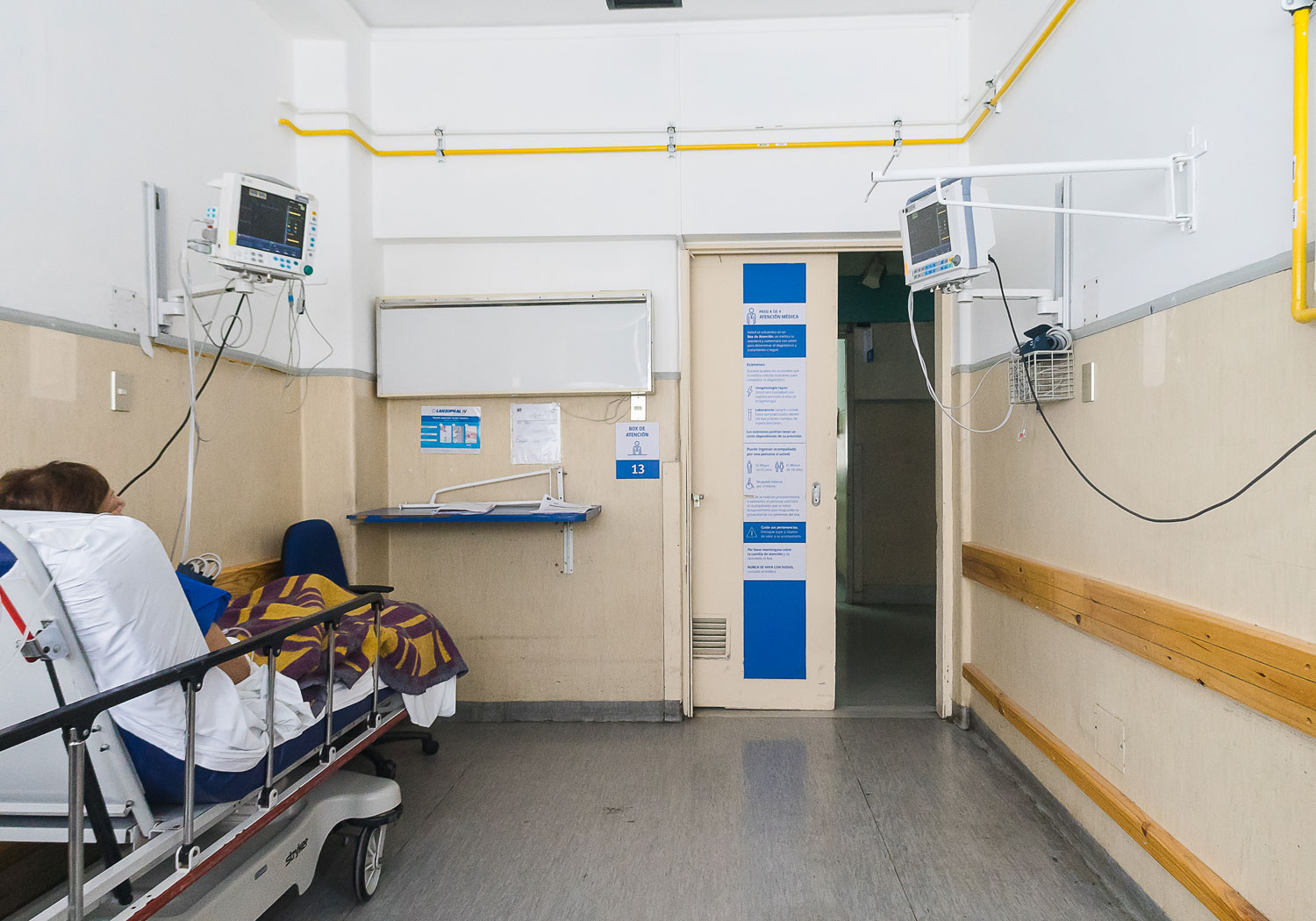Context & Challenge How might we improve the experience of patients and their families during their visit to the Emergency Room?
Emergency Rooms are a particularly negative experience. It’s an instance that brings anxiety, frustration and vulnerability, both to patients and their families. These negative feelings are usually aggravated by the complete lack of information and support in the environment.
Information is hard to read and difficult to understand. It is also visually inconsistent and poorly organized, making wayfinding nearly impossible
“How am I supposed to find the information I need in this sea of paper?” —Patient, Emergency Room (Translated from Spanish)
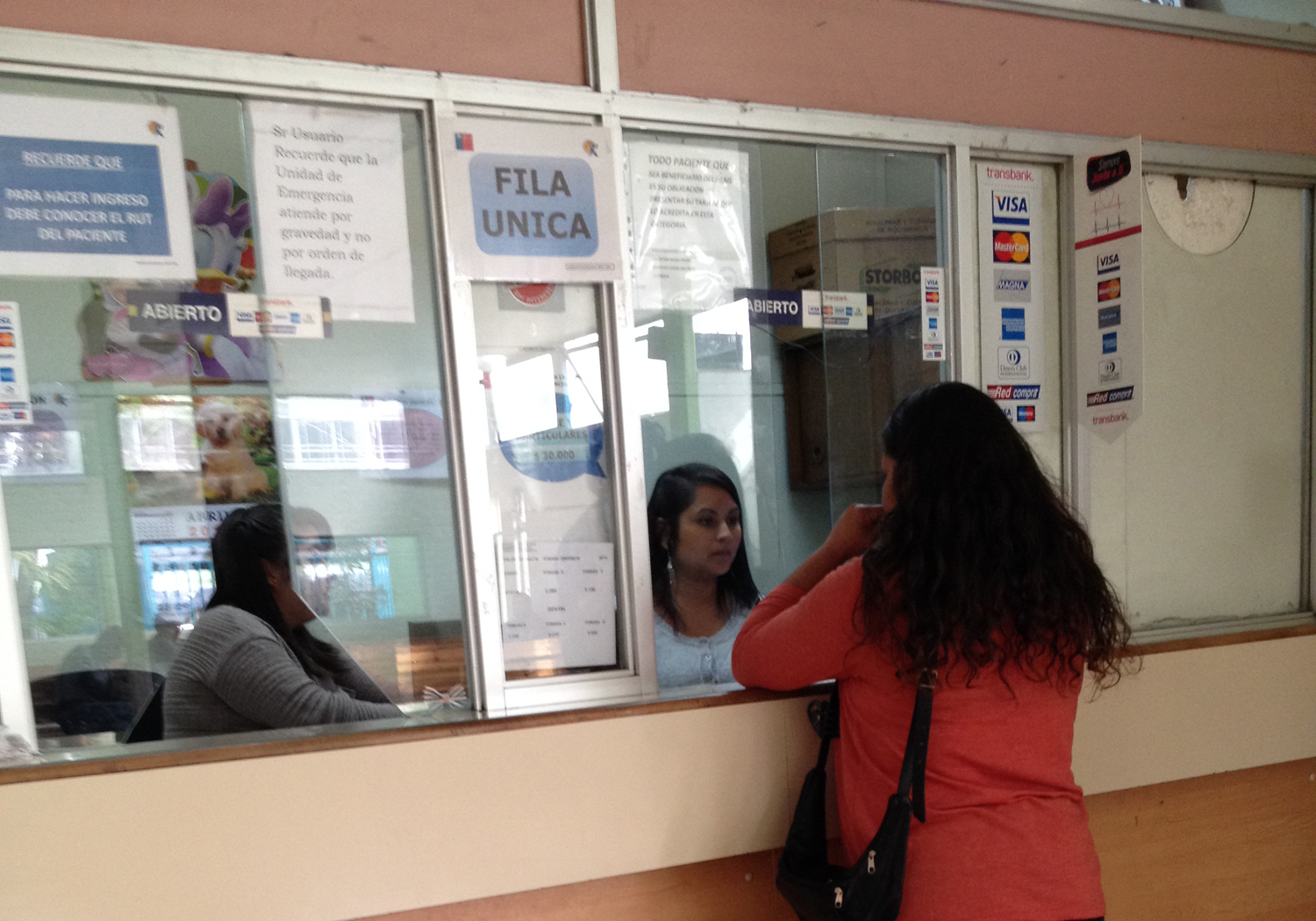
Hospital information · 2014
